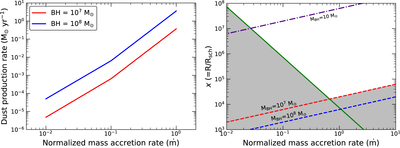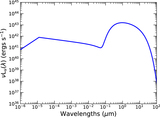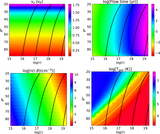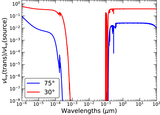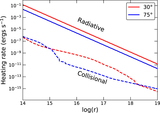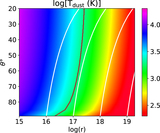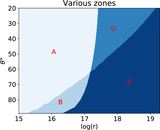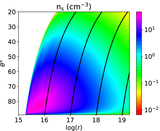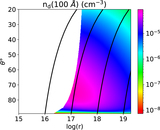Image Details
Caption: Figure 17.
Left panel: dust mass flux in solar masses per year, as a function of the (normalized) accretion rate, ﹩\dot{m}﹩, onto the BH (assumed equal to the wind mass flux at the smallest disk radii) for two different BH masses, M = 107 M⊙ (red) and 108 M⊙ (blue). For ﹩\dot{m}\simeq 1﹩ the dust mass flux is comparable to the accretion rate onto the BH (we remind the reader that the wind mass flux increases like ≃X1/2 with radius, so the local mass flux in the wind at X ∼ 105–106 is much higher than that needed to power the BH emission). Right panel: relation between the dimensionless length (X) and the normalized mass accretion rate ﹩\dot{m}﹩ to identify the limiting conditions that are necessary for dust formation and survival. The green line depicts the line where the ratio of the timescales of chemical reactions and the flow time of the wind is equal to unity. The dotted lines represent the limiting conditions for dust survival, based on the sublimation temperature, for different BH masses. The region in white, therefore, represents the parameter space, where the values of ﹩\dot{m}﹩ and X together support the formation and survival of dust grains.
Copyright and Terms & Conditions
© 2019. The American Astronomical Society. All rights reserved.


